Have you been looking at your T-shirt made of cotton and thought about where it came from? You’re not the only one. Many people wear cotton on a daily basis. However, not everyone knows the process of making it. The journey from the cotton seed to soft, comfortable clothes is a long and interesting one. o, how is cotton produced? Let’s discover it all together in this thorough, straightforward and easy-to-follow guide.
Table of contents
- What Is Cotton?
- Why Is Cotton So Popular?
- How Is Cotton Produced: An Overview
- Where Does Cotton Grow?
- The Cotton Plant Explained
- Cotton Seeds: The Starting Point
- Soil Preparation for Cotton
- Germination and Seedling Growth
- Flowering and Boll Formation
- What Happens Inside a Cotton Boll?
- Maturity and Harvest Time
- Traditional Cotton Harvesting Methods
- Modern Cotton Harvesting
- Cleaning the Cotton: Ginning Process
- Types of Cotton Gins
- Baling and Storage
- Transporting Cotton to Mills
- How Cotton Becomes Yarn
- Weaving and Knitting Cotton Fabric
- Cotton Dyeing and Finishing
- Organic Cotton vs Regular Cotton
- Sustainable Cotton Farming
- Challenges in Cotton Production
- Cotton in the Global Economy
- How Technology Is Changing Cotton produced
- The Future of Cotton Production
- Conclusion
- FAQs
What Is Cotton?
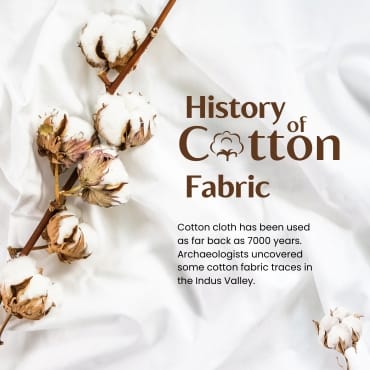
The natural fiber of cotton is. Cotton is produced by plants in tiny fluffy balls referred to as cotton bolls. Cotton has been used by people for hundreds of years. It’s soft and breathable and is great for clothing towels, clothes as well as money in certain countries. Cotton is a plant-based substance that is biodegradable and renewable.
Why Is Cotton So Popular?
It feels soft against your skin. It lets air flow through. This keeps you cool in the summer, and warm in the winter. Cotton absorbs sweat. It’s also sturdy and lasts for a long period of time. It’s also simple to wash. These attributes make cotton a popular choice for people around the globe.
How Is Cotton Produced: An Overview
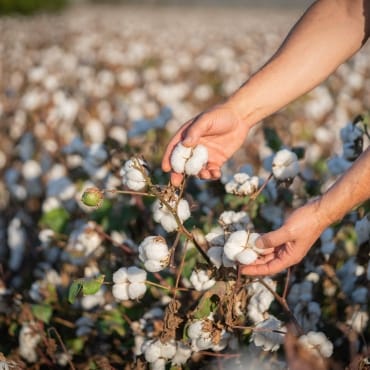
Cotton production isn’t simple. It involves planting, growing harvesting, processing, and storage. Farmers begin with planting seeds of cotton. The plants develop and grow into flowers. The flowers transform into bolls of cotton. After harvesting, machines scrub the cotton. Then factories convert the cotton into fabric and yarn.
Where Does Cotton Grow?
Cotton grows best in warm climates. It requires sunlight as well as water and space. The top cotton-producing nations are:
- India
- China
- United States
- Pakistan
- Brazil
These countries harvest millions of tonnes of cotton each year.
The Cotton Plant Explained
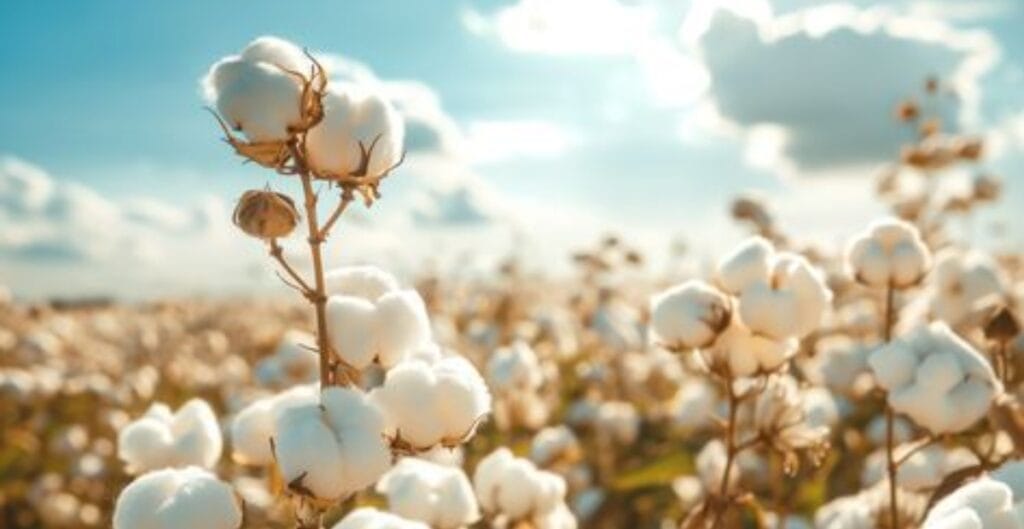
Cotton is an cultivated shrub. It can grow up to 5 feet in height. It is a large, green cotton plant with big leaves and bright blooms. These flowers change colors and transform into cotton bolls. Within these bolls, white soft fibers are growing. Each boll contains seeds and also fiber. The fiber is then transformed into fabric. Read more about Nishat Mills
Cotton Seeds: The Starting Point
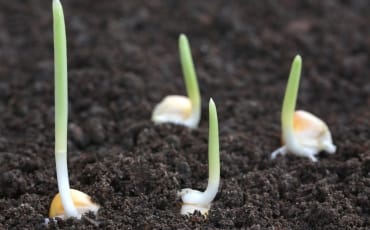
Every cotton journey begins with a seed. In the spring, farmers plant cotton seeds in neat rows, much like soybeans or corn. To help with this process, they use machines that place the seeds directly into the soil. This is the most important step. Healthy seeds will grow into robust plants.
Soil Preparation for Cotton
Good soil helps grow strong cotton. To begin, farmers prepare the soil by tilling it and adding fertilizer. Tilling loosens the dirt, which allows roots to develop more effectively. In addition, fertilizers give plants the nutrients they need. For this reason, some farmers choose to use manure or compost instead of chemical fertilizers.
Germination and Seedling Growth
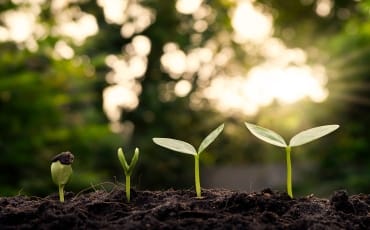
After a few days of planting, seeds start to sprout. Small green shoots emerge. These are seeds. Young plants require attention. Farmers make sure that they receive sufficient water. They also get rid of the weeds. The healthy seedlings are an indication of a good cotton crop ahead.
Flowering and Boll Formation
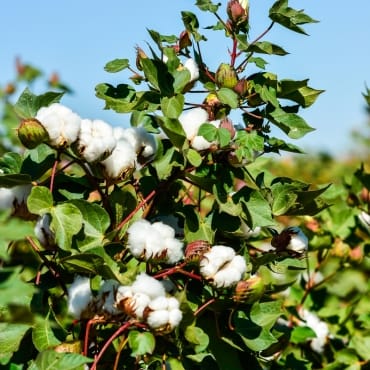
After 40–50 days, the plants begin to bloom. At first, the flowers of the cotton plant are white or vibrant pink. More importantly, these flowers are essential because they later transform into cotton bolls. This is the stage where the soft fiber develops. However, the flowers only bloom for several days before changing.
What Happens Inside a Cotton Boll?
In each cotton boll hairs sprout in the vicinity of seeds. In the beginning, the fibers are soft and wet. In time they dry and then puff up. The boll becomes larger and more rounded. It appears like an unassuming snow ball. This is what farmers are looking for.
Maturity and Harvest Time
In around 150 days or so, this plant will be in the process of being ready. The bolls explode. The white cotton spills over. This signals harvest. The timing is crucial. If farmers hold off for too long, their cotton could be damaged due to rain.
Traditional Cotton Harvesting Methods
A long time ago the cotton was picked using their hands. They would walk through fields and pulled cotton out of bolls. This process is slow, but it is gentle. Some small farms still use handpicking.
Modern Cotton Harvesting
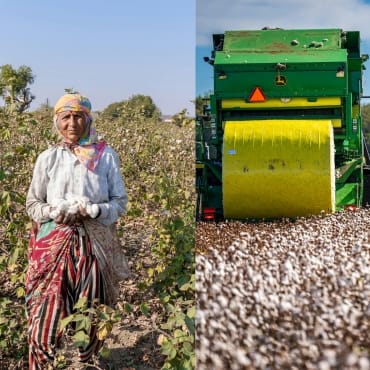
Today, machines perform the job. Cotton pickers travel through fields quickly. They remove cotton from the plants and do not cut them. This helps save time. The cotton is then taken to the nearby gin to be cleaned.
Cleaning the Cotton: Ginning Process
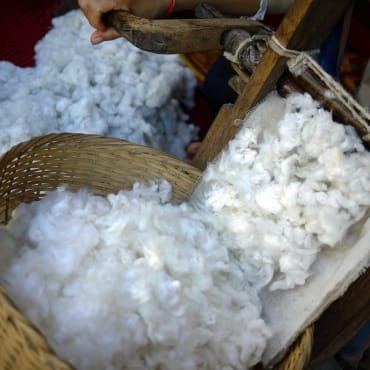
What is the process of producing cotton after the harvest? It is produced through a process known as the ginning. A cotton gin is used to separate soft fibers from hard seeds. This is an essential step. The seeds are kept to be used for oil or plantation. The fibers are used in mills.
Types of Cotton Gins
There are two major kinds of cotton gins:
- Roller Gin Soft and suitable for fibers with long lengths.
- Saw Gin It is faster and more commonplace in U.S.
Both types of cotton clean quickly.
Baling and Storage
Once clean the cotton is then compressed into bales. The bales weigh approximately 500 pounds per bale. Farmers identify each bale. They place them in dry storage areas. Later, trains or trucks transport these to the mills for textiles. Read more about cotton manufacturing secrets
Transporting Cotton to Mills
After harvesting, the cotton bales often travel long distances. They move by train, truck, or even ship. Then, mills around the world convert the cotton into yarn. As a result, the global cotton trade is massive. That’s why your shirt might have been made in India and ended up in New York.
How Cotton Becomes Yarn
In the mill, machines wash the cotton. Then, they are able to card it. This is when they brush the fiber into lines. After that the machines turn it into yarn. The yarn is strong and long. It’s the thread that creates fabric.
Weaving and Knitting Cotton Fabric
Fabric is made from yarn through two different ways.
- Weaving Threads interlaced on a weave.
- Knitting Making loops using needles.
Each method creates different textures. Think of jeans and T-shirts. Both are made of cotton, however, they feel different.
Cotton Dyeing and Finishing
After weaving, the fabric is dyed. Mills employ patterns, colors and prints. They then complete the garment. This means shrinking, softening and making the fabric waterproof. It’s then ready to cut and sew.
Organic Cotton vs Regular Cotton
Farmers grow organic cotton using natural compost and rainwater instead of chemical fertilizers. Farmers rotate their crops in order to protect the soil. Organic cotton is healthier for the environment, however it is more expensive.
Sustainable Cotton Farming
Sustainable farming requires less water, fewer chemicals and better soil management. Farmers also receive fair compensation and help protect wildlife. These measures help the earth and help cotton be more sustainable to cultivate.
Challenges in Cotton Production
Cotton is a subject to many problems:
- Pests such as bollworms
- Heavy rain or drought
- Costs of labor are rising.
- Market price drops
Farmers strive to find solutions to these issues using smart tools and a well-planned plan.
Cotton in the Global Economy
Cotton is a big business. Countries buy and sell cotton each day. Prices vary according to demand and supply. An unfavorable season in one nation can increase prices across the world.
How Technology Is Changing Cotton produced
Modern cotton farms make use of:
- Drones are used to inspect the crops
- GPS-enabled tractors for planting
- Apps for water and weather use
Technology can help farmers produced more cotton using less resources.
The Future of Cotton Production
The future is promising. Many people are seeking organic fair-trade cotton. Scientists are working on drought-resistant cotton. Robots could also choose cotton in the future. The field is getting more intelligent and sustainable.
Conclusion
What is the process by which cotton made? From tiny seeds that grow in the ground to soft, silky fabric on the skin a process that is full of love as well as science and tradition. Knowing this process can help us appreciate what we put on. Next time you are touching your cotton shirt, be mindful of the plant, the farm and the hands that made it.
FAQs
Cotton comes from the fibers inside the cotton plant’s bolls.
It usually takes 5 to 6 months from planting to harvest.
Ginning removes seeds and prepares cotton for spinning into yarn.
It can be, especially when grown with less water and fewer chemicals.

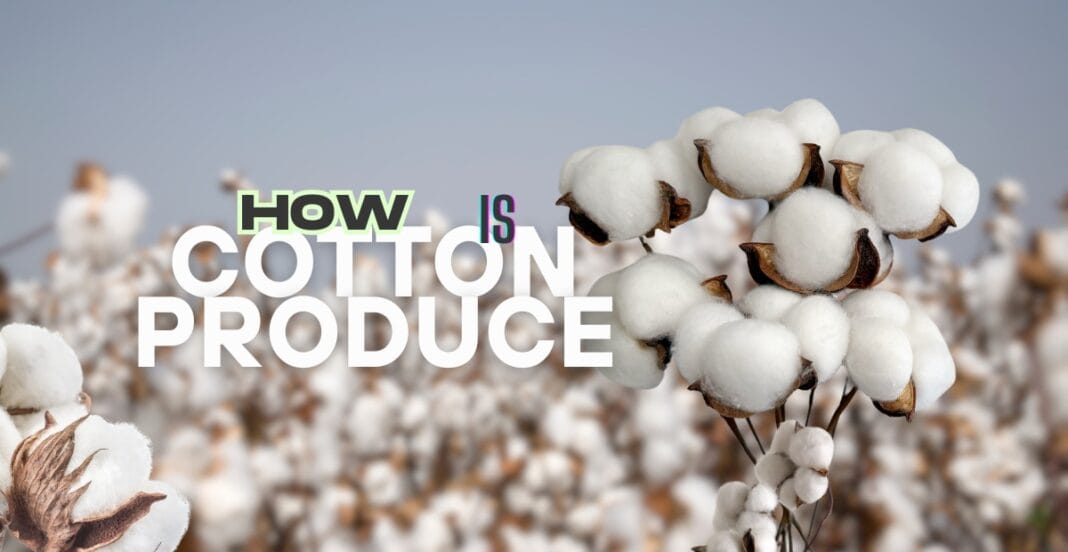

The breakdown of the cotton production process made it much easier to understand why sustainable practices in farming and processing are so important. It’s eye-opening to see how many steps are involved before we even touch the final fabric.